In modern multi-channel businesses, pricing is no longer static or uniform. Organizations selling through direct sales teams, eCommerce platforms, distributors, and partner networks must deliver accurate, dynamic, and channel-specific pricing. Oracle Order Management Cloud and Oracle Pricing provide the structure to design flexible pricing strategies, configure pricing segments, apply pricing algorithms, and enable Oracle price optimization across diverse sales channels. For example, a manufacturing company may offer negotiated pricing to enterprise clients, tier-based incentives to distributors, and promotional e-commerce pricing, all requiring different logic but consistent control.
This guide explains how to manage pricing segment in Oracle, set up price lists, build discount structures, and configure pricing strategies that scale. It also demonstrates how well-designed pricing algorithms support accurate and efficient pricing in Oracle order management. Whether you need channel-specific pricing, tier-based discounts, or a unified pricing framework, this step-by-step overview will help you configure a robust pricing model in Oracle Order Management Cloud.
Key Concepts in Oracle Pricing Setup
- Pricing Segment: Groups transactions by attributes such as channel, geography, customer type, or item category.
- Pricing Strategy: Defines pricing behavior—price lists, discount lists, rules, and the pricing algorithm used in Oracle order management cloud.
- Price List: Base price definition for items.
- Discount List: Adjustments applied based on customer, volume, promotions, or channel.
- Pricing Algorithms / Matrix Classes: Advanced logic used for Oracle price optimization (tiered pricing, markup rules, attribute-based conditions, etc.).
Creating a Pricing Segment
A pricing segment groups orders into logical categories such as direct sales, distributors, or e-commerce customers. This drives which pricing strategy Oracle Order Management uses when an order is captured.
Examples of Pricing Segments
- Direct Sales Segment: For corporate or B2B customers.
- E-commerce Segment: For retail and online sales.
- Distributor Segment: For reseller and partner-based transactions.
How to Manage Pricing Segment in Oracle
Navigation
Functional Setup and Maintenance → Order Management → Search Task → Manage Pricing Lookups → Lookup Type: ORA_QP_CUST_PRICING_SEGMENTS → Create Segment
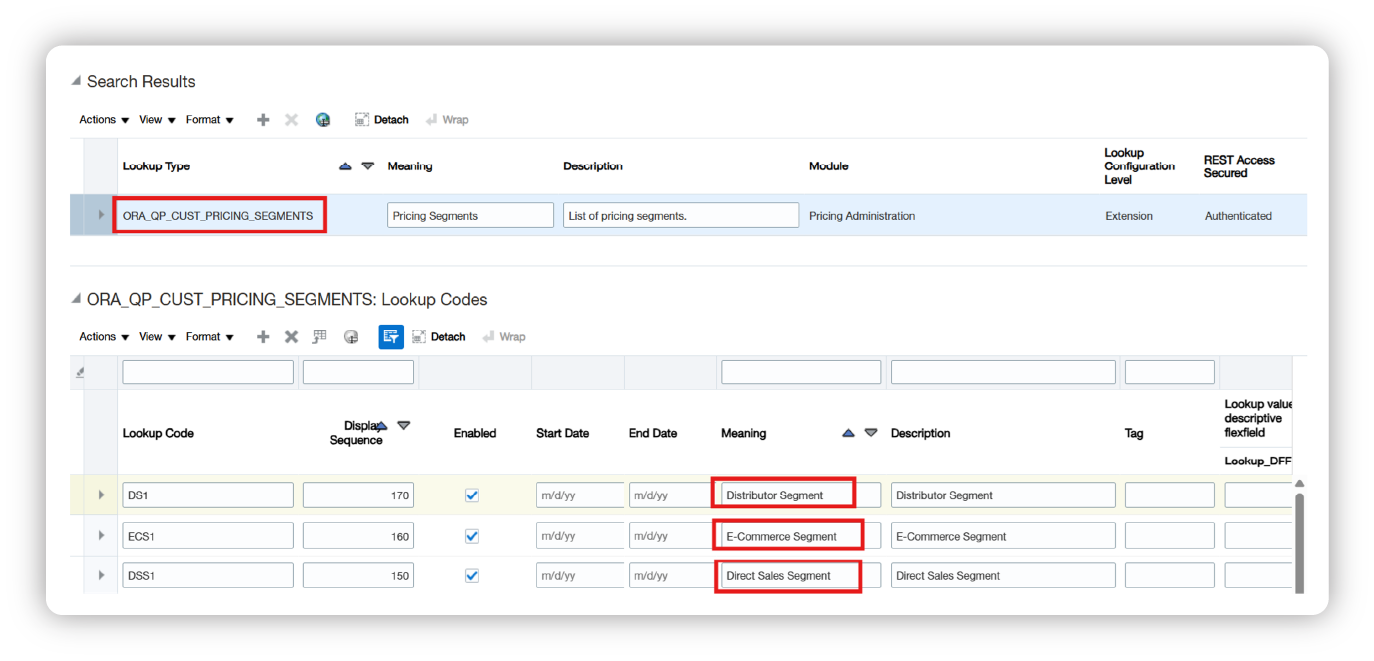
Set Up Price Lists
A Price List defines the base selling price for items. Oracle order management cloud uses these prices as the foundation for discounts, markups, and pricing rules.
Why Create Multiple Price Lists?
Different channels usually require different pricing models:
- Corporate Price List
- Distributor Price List
- E-commerce Price List
Navigation
Order Management → Pricing Administration → Manage Price Lists → Create
After creation, click Save and Edit, add items, and assign the Access Set before approval.

Define Discount Lists
(Optional but widely used in Oracle pricing)
A Discount List defines adjustments as either a percentage or a fixed amount.
Use Cases
- Direct Sales: Smaller volume-based discounts
- Distributors: Larger tier-based discounts
- E-commerce: Promotions, coupon codes, seasonal pricing
Create a Discount List
Nav → Order Management → Pricing Administration → Manage Discount Lists → Create
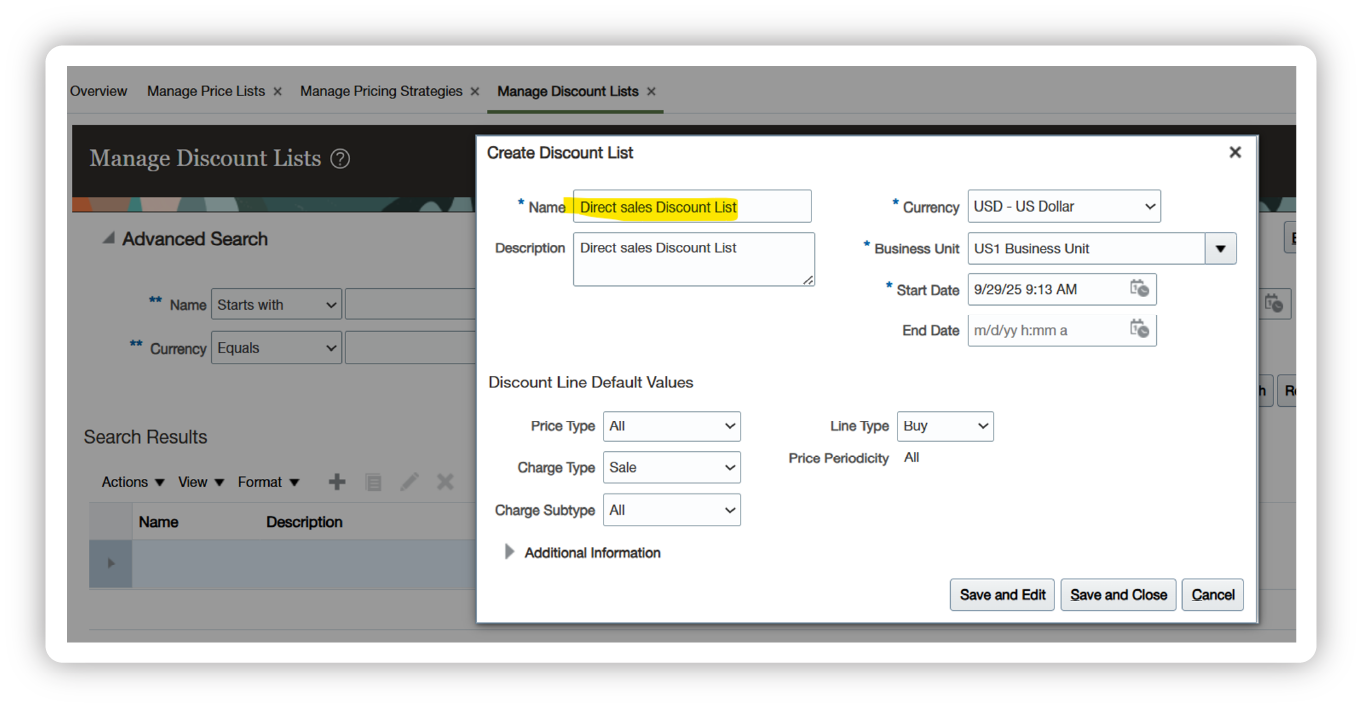
After saving, add items and create discount rules.
Types of Discount Rules
Simple Rule: Straightforward price adjustment based on a single condition.
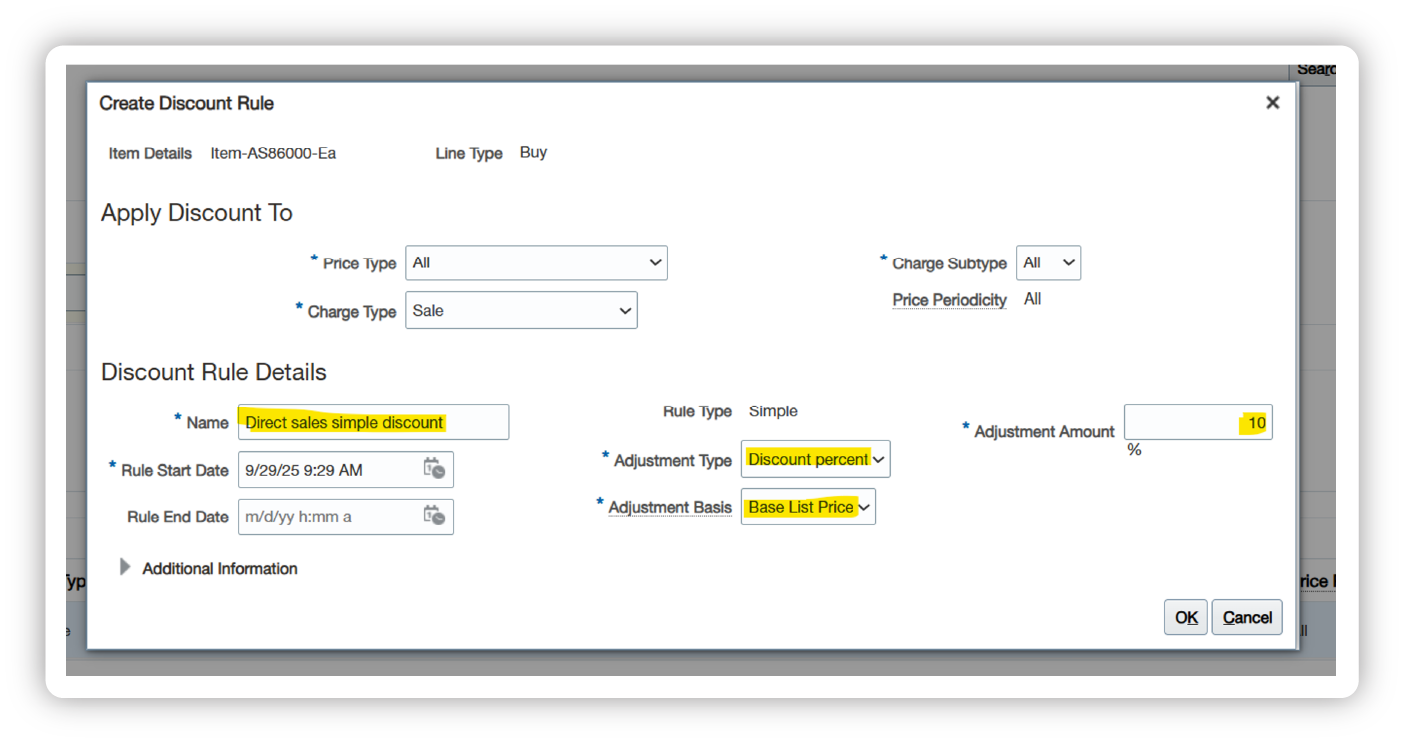
Tier-Based Rule: Pricing changes depending on quantity or value tiers.
Example:
- 1–10 units → No discount
- 11–20 units → 5%
- 21+ units → 10%
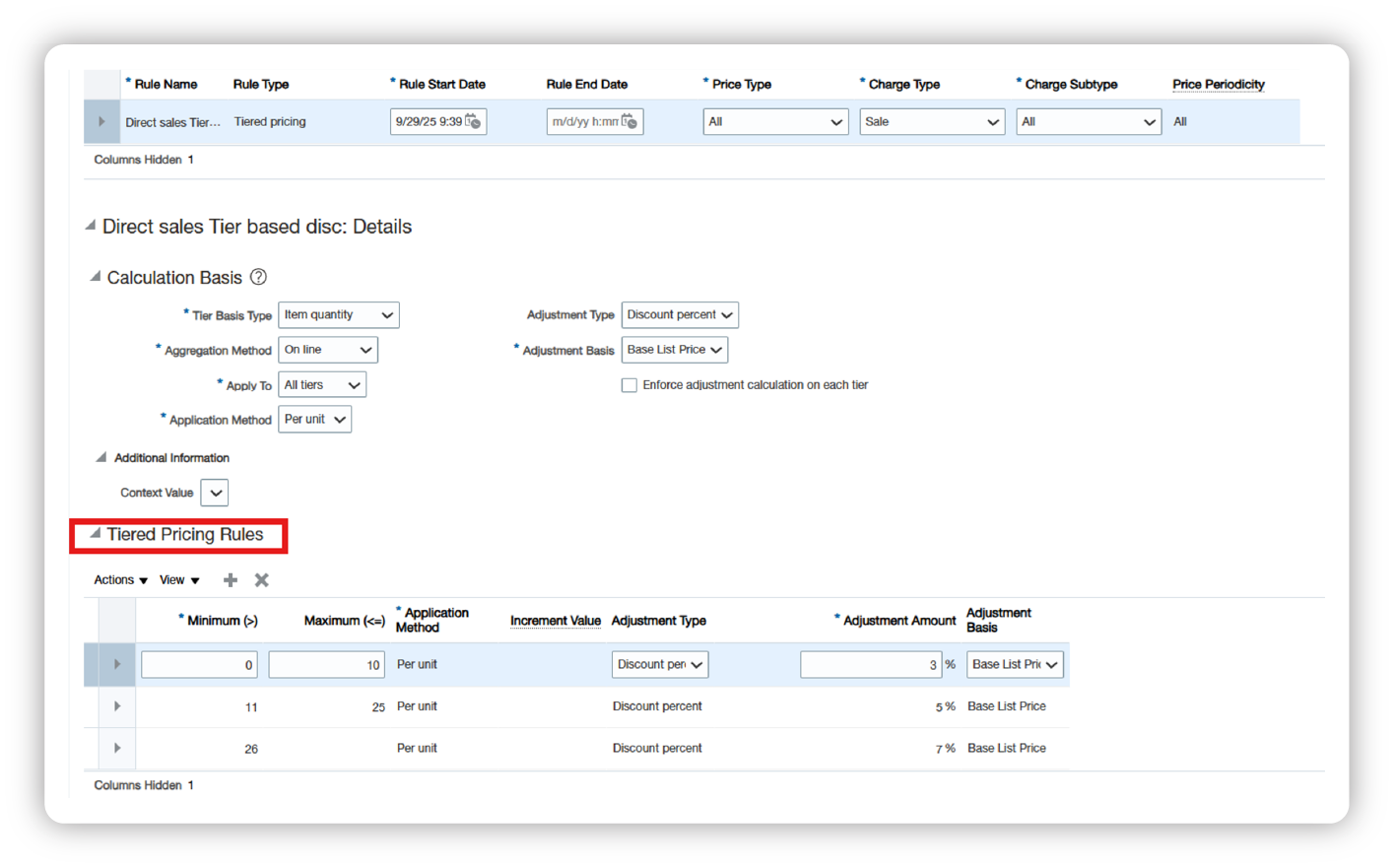
Attribute-Based Rule: Adjustments based on attributes such as customer class, product category, or order type.
Example:
- Gold customers → 15% off
- If Item = AS15000 → 7% discount
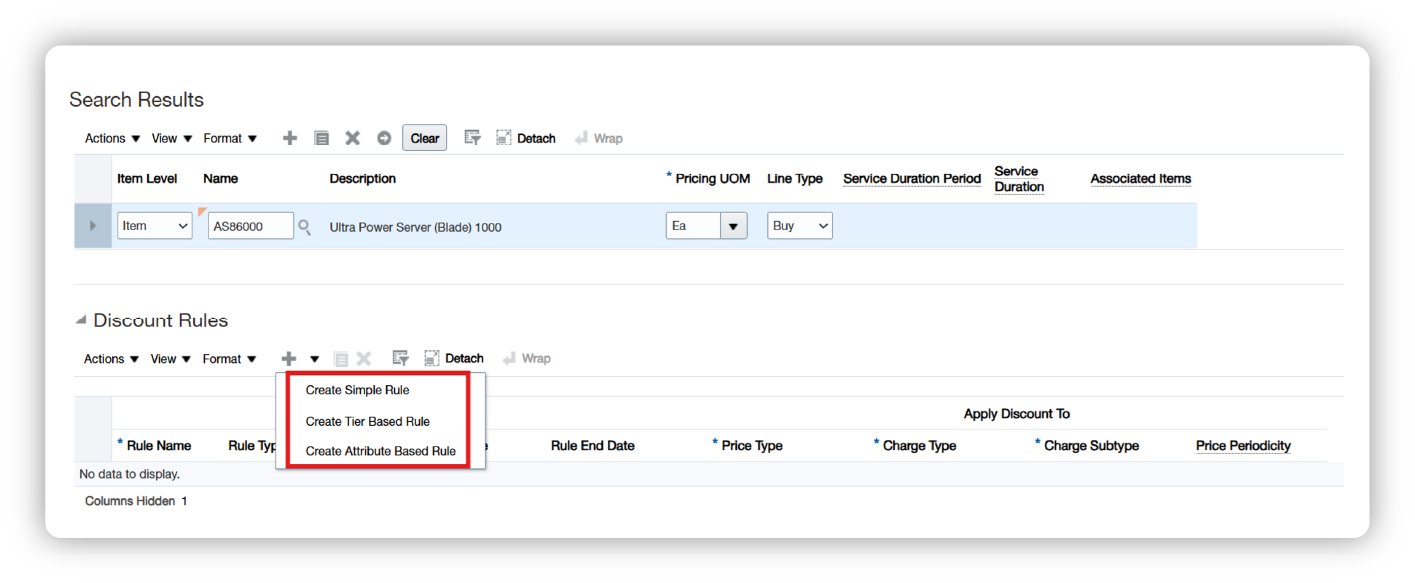
Define a Pricing Strategy
A pricing strategy bundles price lists, discount lists, cost lists, and rules into one logical pricing container. Oracle order management uses this strategy at runtime through a pricing algorithm.
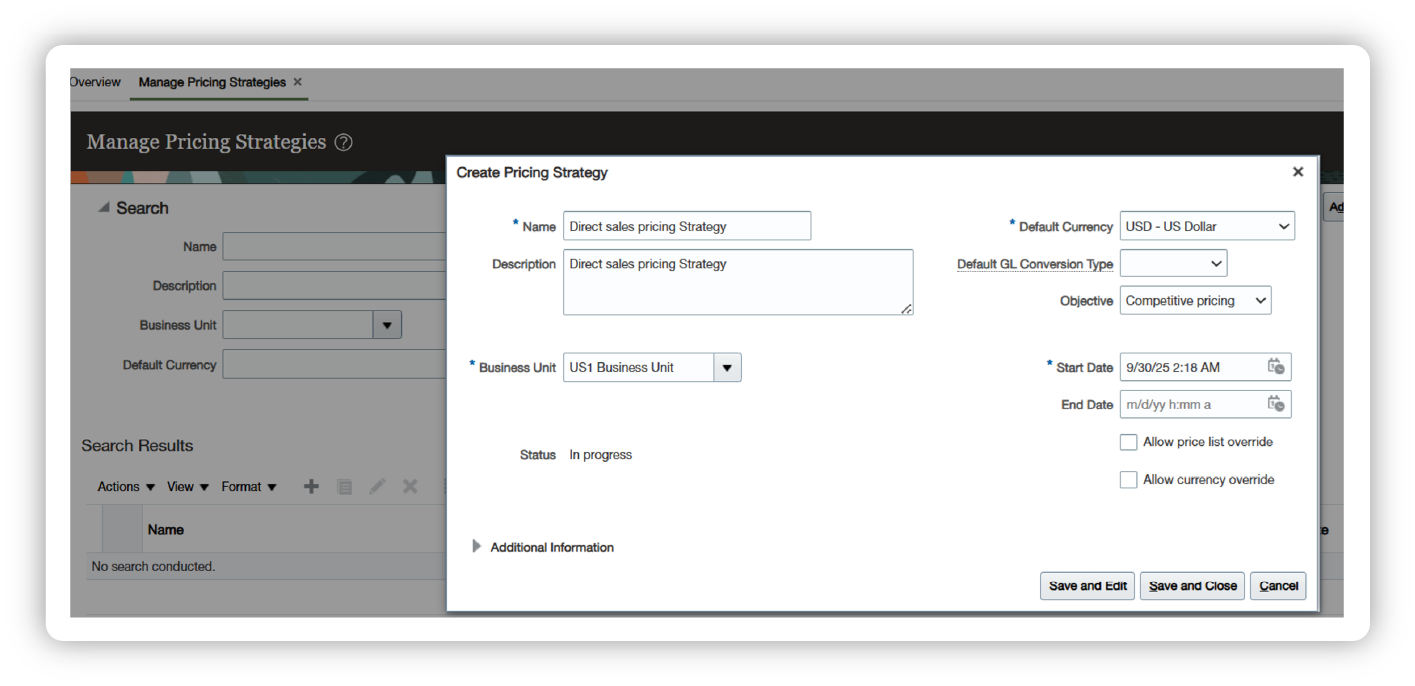
Navigation
Order Management → Pricing Administration → Manage Pricing Strategies
Attach
- Price Lists
- Discount Lists
- Cost Lists (if applicable)
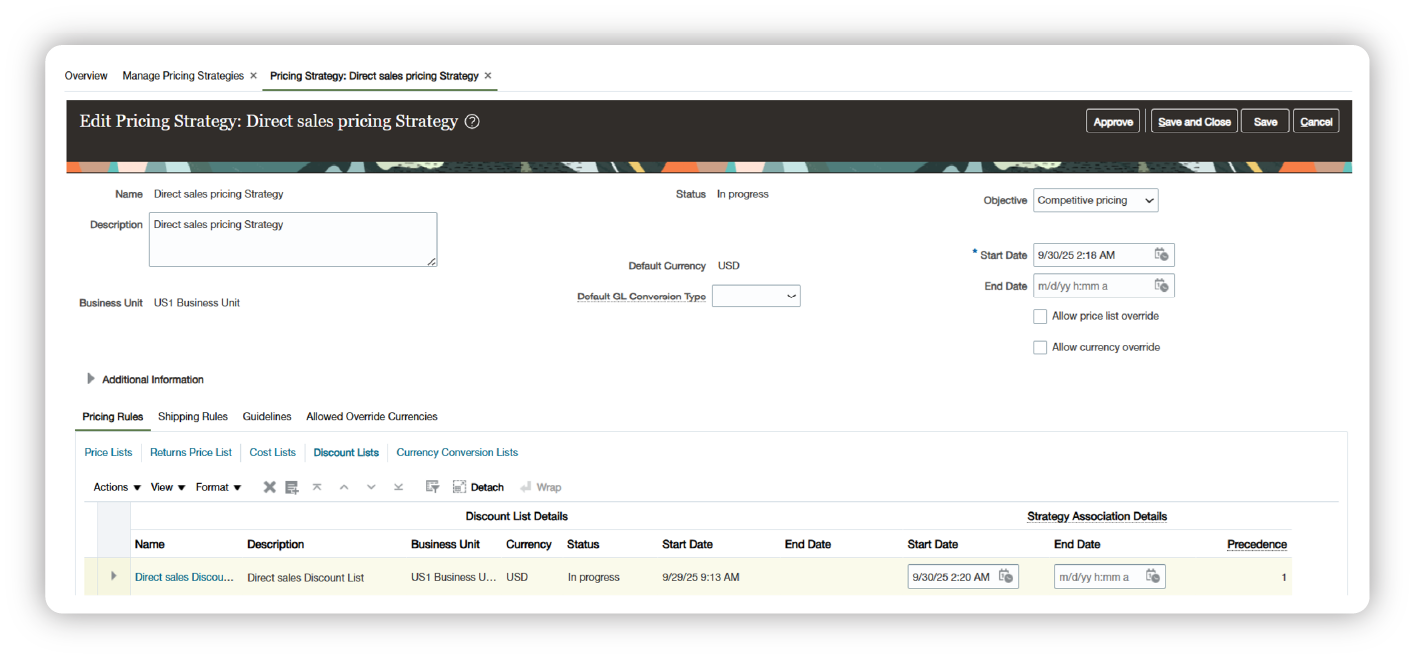
Create separate pricing strategies for:
- Direct Sales
- E-commerce
- Distributors
- Partners
Customer Pricing Profiles
A Customer Pricing Profile determines which pricing strategy applies to a customer during order capture in Oracle order management cloud.
It enables personalized pricing based on:
- Customer size
- Revenue potential
- Customer category
- Geography
Create a Customer Pricing Profile
Order Management → Pricing Administration → Manage Customer Pricing Profiles
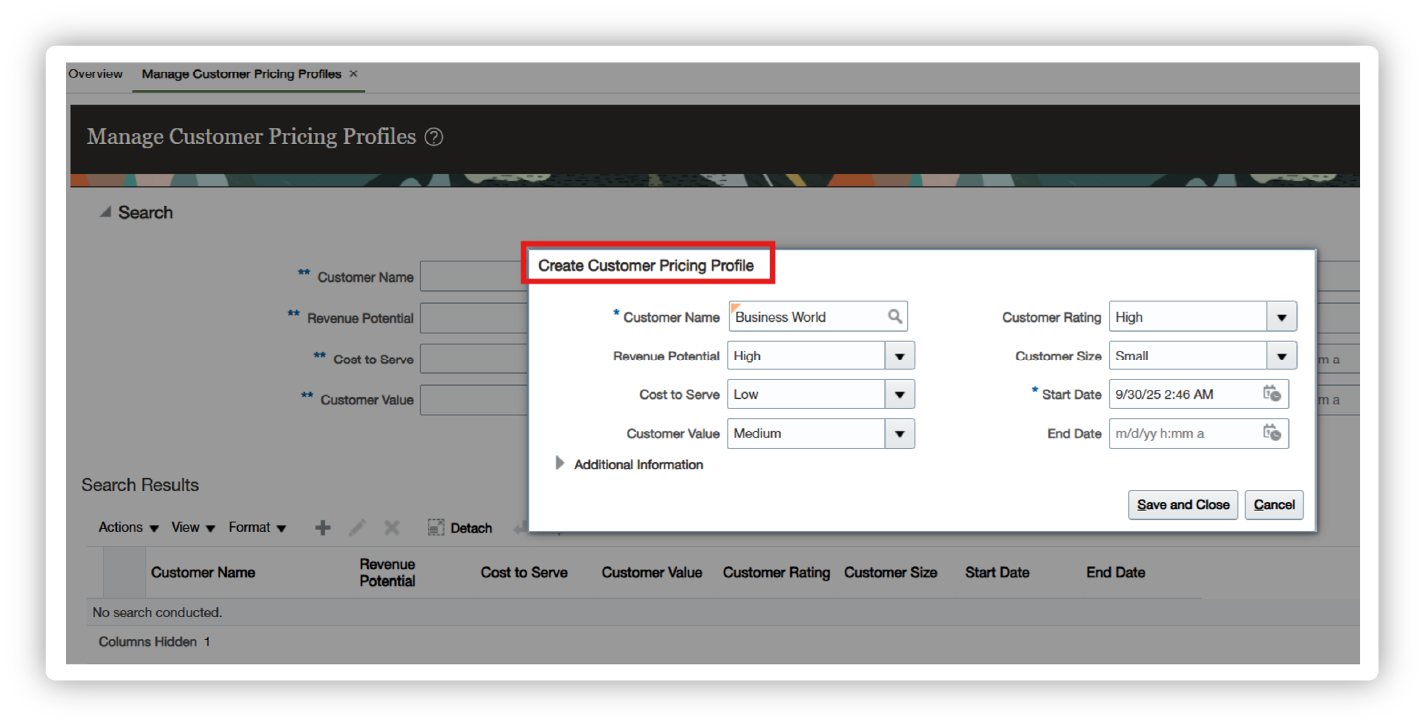
Assign the Customer to a Pricing Segment
Order Management → Pricing Administration → Manage Pricing Segments

Assign Pricing Strategies Automatically
The task Manage Pricing Strategy Assignments connects Customer Pricing Profiles, Pricing Segments, and Pricing Strategies.
Navigation:
Order Management → Pricing Administration → Manage Pricing Strategy Assignments

Rules determine:
- Which customer gets which pricing
- Which channel triggers which price list
- How pricing algorithms are invoked
This step is critical for Oracle price optimization.
How Pricing Algorithms Work at Runtime
Oracle pricing uses the pricing algorithm at sales order runtime to compute the final price:
- Identify the customer pricing profile
- Map the order to a pricing segment
- Evaluate pricing strategy assignments
- Apply the associated pricing strategy
- Price List
- Discount List
- Surcharges
- Attribute rules
- Matrix classes
- 5. Return the final optimized price to Oracle Order Management
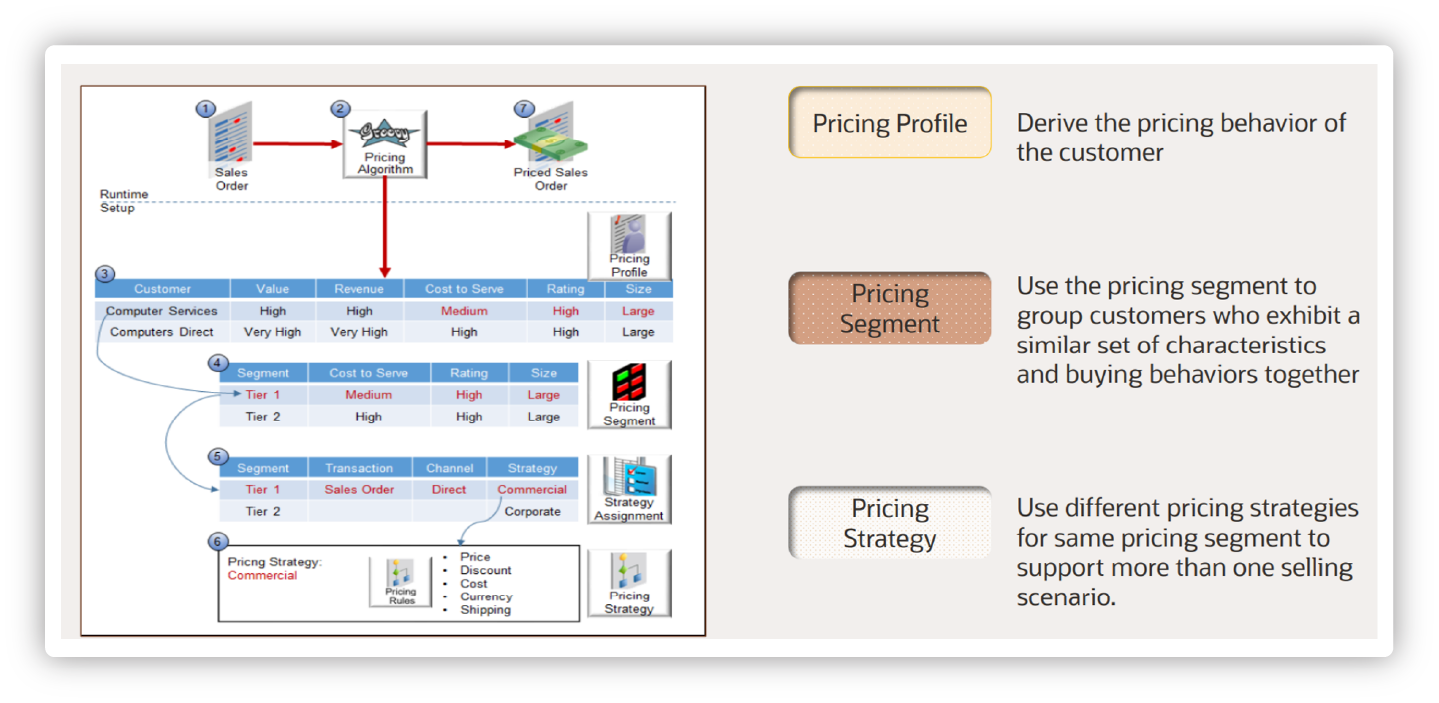
This behavior ensures scalable, accurate pricing across all Oracle order management cloud channels.
Conclusion
A well-designed pricing model in Oracle Order Management Cloud requires more than just price lists. It involves setting up pricing segments, leveraging pricing algorithms, and aligning discount structures and strategies across customer types and sales channels. By implementing these components correctly, organizations can achieve consistent pricing, stronger controls, and better Oracle price optimization across their business.
From advanced pricing models and order management optimization to Oracle Fusion implementations, EBS upgrades, EPM solutions, and managed services, our Oracle specialists can support your transformation initiatives. Explore our full Oracle offerings here.

